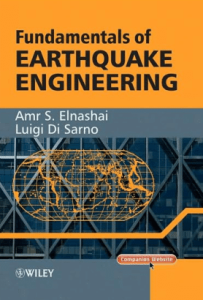Environmental Engineering Fundamentals, Sustainability, Design
Introduction to Environmental Engineering Fundamentals, Sustainability, Design
Environmental engineering tackles some of the most urgent challenges of our time—climate change, pollution, water scarcity, and resource depletion. As the demand for sustainable solutions increases, the role of environmental engineers has evolved from simply managing environmental issues to actively designing systems that prevent them.
“Environmental Engineering: Fundamentals, Sustainability, Design” by James R. Mihelcic and Julie B. Zimmerman is more than just a textbook—it’s a roadmap for engineers committed to sustainability. The book weaves scientific principles with real-world design strategies, making it a valuable resource for students and professionals alike.
Background: A Shift in Engineering Mindset
Environmental protection is no longer just about compliance and cleanup. Today’s focus is on proactive, sustainable design. This book reflects that evolution, offering a framework rooted in the idea that engineers should work with natural systems, not against them.
Aligning with Global Priorities (Environmental Engineering Fundamentals, Sustainability, Design)
The book aligns with major initiatives like the National Academy of Engineering’s Grand Challenges, which include managing the carbon and nitrogen cycles. These cycles are at the heart of climate and ecological health. Disruption to either—through emissions or agricultural runoff—leads to climate warming, water pollution, and loss of biodiversity. Engineers now must think bigger, addressing root causes rather than just symptoms.
Core Concepts of Environmental Engineering Fundamentals, Sustainability, Design
The strength of Mihelcic and Zimmerman’s approach lies in how they bridge theory and practice, helping readers grasp both the “why” and the “how” of sustainable engineering.
Sustainable Design and Innovation
The book introduces frameworks such as life cycle assessment (LCA) and systems thinking to guide decision-making. These tools help engineers evaluate environmental impact from cradle to grave—raw material extraction, production, use, and eventual disposal.
-
Life Cycle Thinking: Engineers are taught to think beyond the immediate outcome of a project and consider long-term effects. For instance, a water filtration system may work well now, but what are the energy and material inputs? What happens when it breaks down?
-
Systems Thinking: This is essential in recognizing interconnections. Changing one element in an environmental system can create ripple effects—some helpful, others harmful. Systems thinking allows engineers to map those relationships and predict outcomes.
Environmental Measurements (Environmental Engineering Fundamentals, Sustainability, Design)
To make informed decisions, environmental engineers must quantify what’s happening in their systems. The book emphasizes:
-
Mass and energy balances
-
Air and water quality testing
-
Flow measurements in natural and engineered systems
These techniques are the foundation for assessing environmental performance. If you can’t measure it, you can’t improve it.
Chemistry and Biology in Environmental Systems
Understanding the chemical and biological processes in natural systems is critical for designing effective interventions. The book provides a solid introduction to:
-
Chemical equilibria and reactions (e.g., acid-base balance, redox reactions)
-
Microbial processes, including those used in biological treatment systems like activated sludge
This knowledge helps engineers choose the right treatment methods and predict the behavior of contaminants.
Physical Processes (Environmental Engineering Fundamentals, Sustainability, Design)
Physical processes such as fluid dynamics, mass transfer, and sedimentation are also covered in depth. These principles are applied to technologies like:
-
Water filtration
-
Air scrubbing
-
Sediment basins in stormwater management
Understanding the physics behind environmental systems ensures designs are both efficient and effective.
Environmental Risk Assessment
Engineers must weigh the risks associated with various contaminants and technologies. The book outlines methods for:
-
Hazard identification
-
Exposure assessment
-
Risk characterization
These tools are crucial for making safety-based decisions and ensuring projects meet regulatory requirements.
Practical Applications in the Real World
The real value of this book lies in its application-oriented focus. Rather than just presenting theory, it dives into how engineers solve problems in the field.
Water and Wastewater Treatment
The book explores modern water treatment systems that go beyond purification—systems designed to reclaim resources, minimize energy use, and produce less waste.
For example, advanced biological treatment methods can capture methane for energy use or recover nutrients for agricultural reuse.
Solid Waste Management (Environmental Engineering Fundamentals, Sustainability, Design)
From landfilling to recycling to composting, the text examines how engineers can design waste systems that are cost-effective, low-emission, and circular—where waste becomes a resource.
Air Quality Control (Environmental Engineering Fundamentals, Sustainability, Design)
Air pollution isn’t just a health issue—it’s a climate issue. The book discusses engineering controls like:
-
Scrubbers
-
Electrostatic precipitators
-
Filtration systems
These reduce harmful emissions from industrial processes while improving compliance with air quality standards.
Challenges Facing Environmental Engineers
Environmental engineers often work in complex, constraint-heavy environments. Limited budgets, strict regulations, and growing populations add pressure to deliver sustainable solutions at scale.
Resource Scarcity
From clean water to rare earth metals, essential resources are running low. The book discusses strategies for resource recovery and reuse, such as:
-
Greywater recycling
-
Phosphorus extraction from wastewater
-
Materials recycling in construction
Regulatory Compliance
Environmental projects must navigate a web of local, national, and international regulations. The book provides tools and strategies for designing systems that not only meet current rules but can also adapt to future changes.
Climate Change Adaptation
As climate impacts intensify, infrastructure must become more resilient. Engineers are encouraged to incorporate flexible, climate-responsive design—e.g., flood-tolerant wastewater systems or drought-adapted water reuse technologies.
In-Depth Case Study: Nutrient Recovery in Wastewater
One standout example in the book is the nutrient recovery process in municipal wastewater treatment. Traditional plants remove nitrogen and phosphorus to prevent eutrophication, but they often discard those nutrients in sludge.
Turning Waste into Value
New systems now capture and reuse those nutrients, especially phosphorus—a non-renewable resource vital for agriculture. Technologies like struvite precipitation reactors are highlighted as both cost-saving and environmentally beneficial.
Broader Impact
This approach doesn’t just treat wastewater—it closes nutrient loops, reduces reliance on synthetic fertilizers, and limits runoff that damages aquatic ecosystems. It’s a prime example of circular thinking in engineering.
Tips for Practitioners and Students on Environmental Engineering Fundamentals, Sustainability, Design
This book isn’t just for reading—it’s meant to guide ongoing learning and professional practice.
Embrace Interdisciplinary Approaches
No environmental problem exists in a vacuum. Engineers should collaborate with:
-
Ecologists
-
Economists
-
Urban planners
-
Public health experts
This ensures holistic, well-rounded solutions.
Stay Current on Technology
Emerging tools like AI in environmental monitoring, bioremediation, and smart sensors are rapidly changing the field. The book encourages readers to stay up-to-date through:
-
Web modules
-
Industry journals
-
Continuing education
Think Beyond Compliance
Meeting legal standards is a baseline. The best projects raise the bar, pushing toward zero emissions, zero waste, and regenerative design principles.
Frequently Asked Questions About Environmental Engineering Fundamentals, Sustainability, Design
Who Is This Book For?
Primarily designed for undergraduate and graduate students in environmental engineering, it also serves as a reference for professionals seeking to update their understanding of sustainable design.
Whether you’re entering the field or advancing within it, the book helps bridge the gap between traditional engineering training and modern sustainability challenges.
Does It Include Exercises?
Yes. Each chapter features:
-
End-of-chapter problems
-
Real-life case studies
-
Design challenges
These tools reinforce core concepts while encouraging hands-on problem-solving.
Is It Suitable for Self-Learning?
Absolutely. The book includes online resources, web modules, and data sets for independent learners. It’s also structured in a way that supports modular study—you can dive into specific topics without reading cover-to-cover.
Final Thoughts
“Environmental Engineering: Fundamentals, Sustainability, Design” is more than a textbook—it’s a practical guide for the future of engineering. As sustainability becomes the cornerstone of every infrastructure decision, tools like this are essential for equipping engineers with the mindset and methods to build a resilient, regenerative world.
It stands out not just because of the breadth of topics covered, but because it gives engineers the confidence to lead. From understanding chemical processes to applying systems thinking and embracing cutting-edge technology, the book helps transform technical expertise into sustainable impact.
Related Topics
-
Basic Civil and Environmental Engineering
-
Underground Spaces Design Engineering and Environmental Aspects
-
Principles of Geotechnical Engineering 7th Edition
-
Introducing Geographic Information Systems with ArcGIS
-
Geology for Civil Engineers Second Edition
Related Topics:
 Underground Spaces Design Engineering and Environmental Aspects
Underground Spaces Design Engineering and Environmental Aspects
 The Design And Sustainability Of Renewable Energy Incentives
The Design And Sustainability Of Renewable Energy Incentives
 Basic Civil and Environmental Engineering
Basic Civil and Environmental Engineering
 The Fundamentals Of Electrical Engineering For Mechatronics
The Fundamentals Of Electrical Engineering For Mechatronics
 Fundamentals of Structural Engineering Second Edition
Fundamentals of Structural Engineering Second Edition
 Fundamentals of Earthquake Engineering
Fundamentals of Earthquake Engineering
